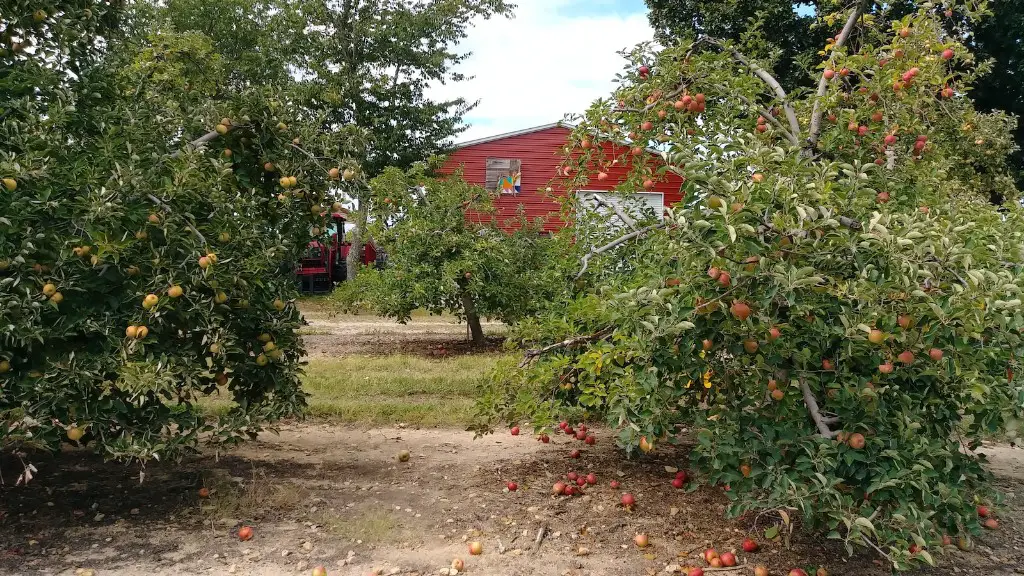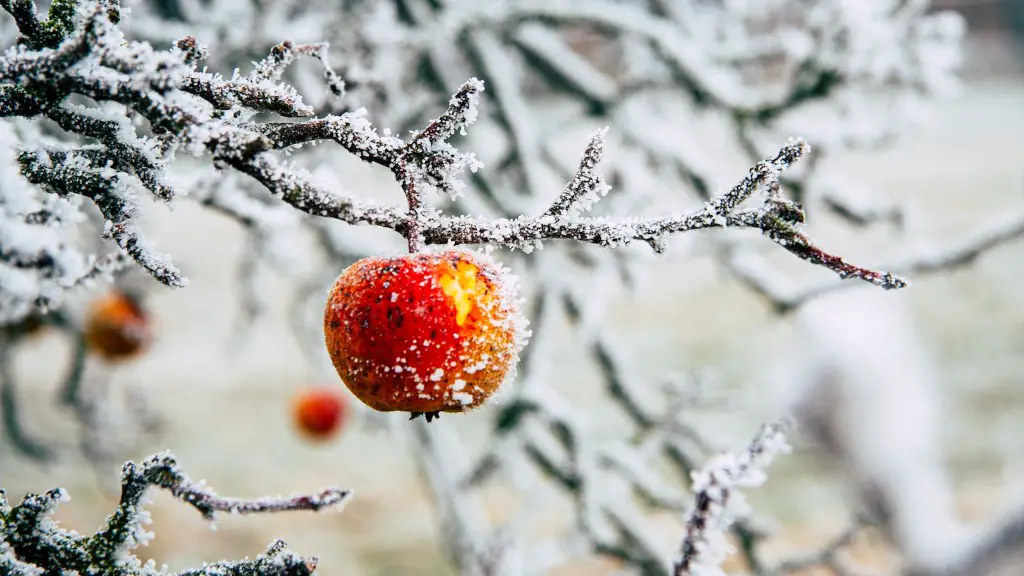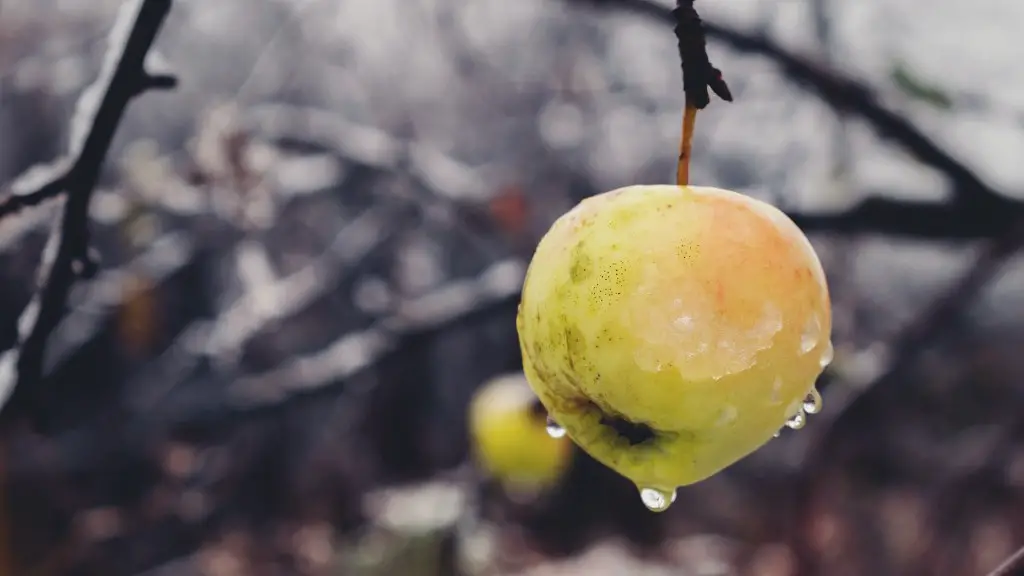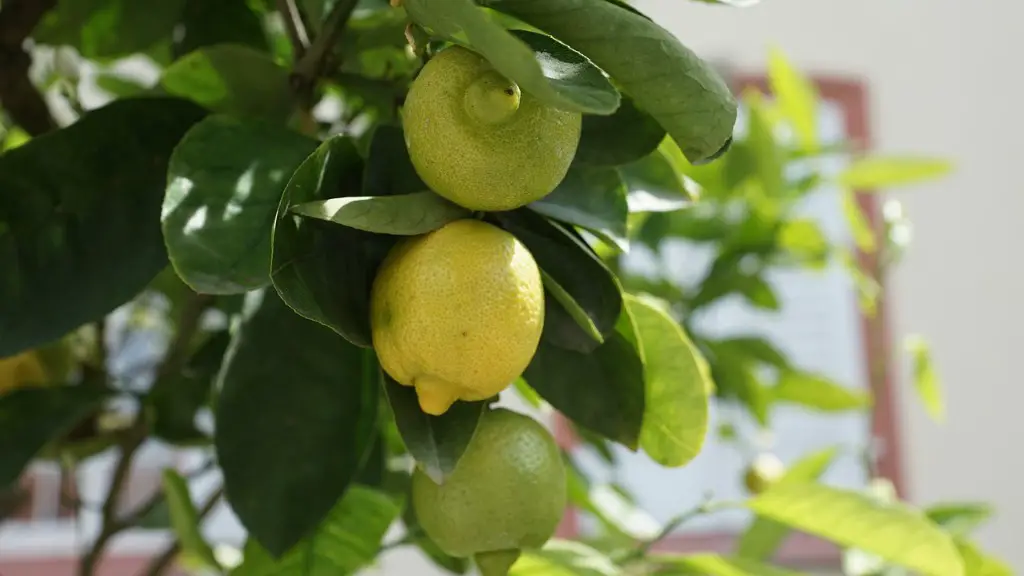Have you ever thought of transplanting an apple tree in your backyard? Transplanting an apple tree can be told as an intimidating process by a gardening novice, however, it is really easy to do with a few simple steps! In this blog post, we will discuss how you can easily transplant an apple tree in no time.
The first step is to identify the type of apple tree you’re looking to transplant. Depending on the variety, size and choice of apple tree, the type of soil and environment needed for its successful transplantation may vary. After you have determined the tree variety, you will have to choose a location for transplanting the tree. Choose a location that receives full or partial sunlight and has good soil drainage. You should also consider the maturity of the tree for the ideal size and shape of the tree in its new location.
The next step is to dig the rootball of the tree. Start by digging a wide circle around the tree, making sure to leave enough space for the rootball to fit. The depth of the circle should also be enough to allow for the roots’ growth. Ensure that the rootball remains intact as much as possible while you are digging.
Now, you will have to prepare the soil in the location where you intend to transplant the apple tree. Add a layer of compost, manure and other nutritious additives that are beneficial to the soil. This will help to create a healthy environment for the development of the tree’s roots. You should also use a shovel for loosening the soil before planting the tree.
When you are ready, it is time to remove the tree from its original location. You should lay down newspapers or other covering materials before lifting the apple tree from its roots. Wrap the tree’s trunk and roots very carefully with the covering material. Make sure not to damage the tree’s trunk or branches while transplanting.
Finally, you can place the tree in its new location. Gently, remove the tree from the covering material and place it in the prepared soil. Press the soil around the rootball firmly with both hands to ensure there are no air pockets in the soil. After that, add three to four inches of mulch or compost around the tree’s base to help with water retention. Finally, water the apple tree deeply to help it settle in its new home.
Managing the Tree After Transplanting
Once you have successfully transplanted your apple tree, it is time to care for it. You should water the tree regularly for about a week to help it adjust to its new location. After that, water the tree deeply once or twice a week during a dry season. Check the soil often to ensure it doesn’t dry out and remember to add extra mulch or compost around the base of the tree in the winters.
It is important to prune the apple tree after transplanting, but it should only be done once the tree is fully established in its new home. If the tree was pruned before transplanting, you should wait for a few months before pruning again. Additionally, if there are any broken branches, they should be removed immediately to help the tree heal faster.
Most importantly, keep an eye out for any signs of disease or pests. Keep your apple tree healthy by providing it with a balanced diet of fertilizer and by checking for any signs of disease or pests regularly. If you find any signs of disease or pest problems, you should contact your local nursery for guidance.
Staking the Transplanted Tree
In some cases, it might be necessary to stake the tree after transplanting. Staking can provide extra support for a tree that is still in its establishing phase. However, it is important to ensure that the apple tree is firmly pressed into the ground and that there is no air gap between the tree and the soil. The stake should be at least four feet tall, and you should use a soft material like twine or fabric to tie the apple tree to the stake.
Make sure the tree is firmly secured to the stake, as any loose bindings can cause harm to the tree. Staking should also not be done for too long as it can lead to further damage to the tree. If you feel staking is necessary, check the straps regularly to ensure they are tight and not causing any harm to the tree.
Helpful Tips for Transplanting an Apple Tree
Transplanting an apple tree can be a daunting task for any gardening novice, however, following the simple steps provided in this blog post will make the process much easier. Here are a few tips that will be helpful for successful transplantation of an apple tree.
- Choose a location carefully. Ensure that the location you are choosing receives the required amount of sunlight and have well-drained soil.
- When you are digging the roots of the tree, take care to make sure the rootball stays intact.
- Prepare the soil before planting the apple tree by adding compost, manure and other additives.
- Gently remove the tree from its original location and place it in the new location. Press the soil around the rootball firmly with both hands to ensure there are no air pockets.
- Water the tree deeply after transplantation, and then water it once or twice a week during dry seasons.
Signs of a Successful Transplantation
Once the tree has been transplanted successfully, you should keep an eye out for signs of its healthy development. Your apple tree should develop vibrant, green leaves and branches within the first few weeks of planting. It is also important to note the tree’s growth rate and make sure that it is growing and developing normally.
If your apple tree starts experiencing any signs of disease or pests, it is important to take immediate action and call your local nursery for guidance. Additionally, you should also keep an eye out for any signs of stress, like wilting and yellowing of leaves, as this can be a sign of too much or too little water.
Maintenance of the Transplanted Apple Tree
In order to ensure your apple tree’s healthy development, it is important to carry out regular maintenance. Prune the apple tree regularly to help it keep a healthy shape and structure. Make sure to check for diseases and pests on a weekly basis and treat them immediately if noticed.
You should also fertilize your apple tree twice a year with beneficial additives. Mulch or compost should also be added around the tree’s base to keep the soil moist and prevent weeds from growing. Finally, check the stakes regularly and make sure the tree is firmly secured to them.




